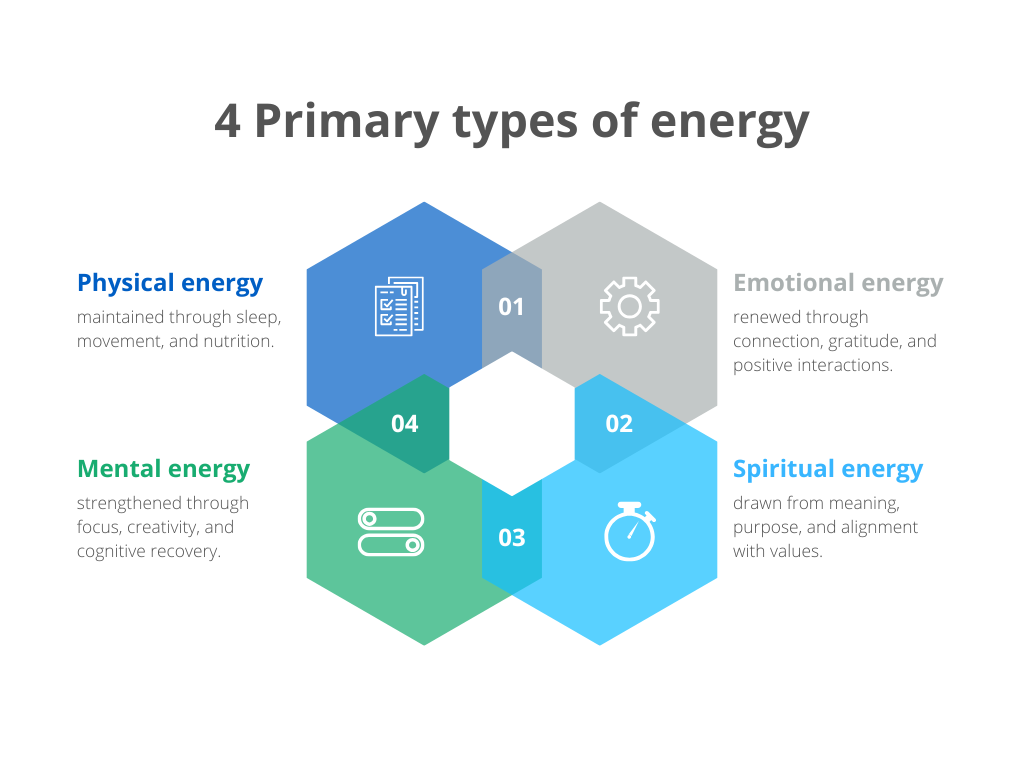From boardrooms to airports, executive calendars rarely rest. Between leading teams, driving strategy, and staying ahead of disruption, maintaining a healthy work-life balance can feel like an impossible goal. Yet for senior leaders, balance isn’t a luxury: it’s both a performance advantage and a personal necessity.
But achieving it is easier said than done. Many executives find themselves trapped in cycles of constant availability, measuring success by hours worked or emails answered. Technology has blurred the lines between professional and personal life, creating a world where “always on” has become the default mode. Over time, this pressure erodes not just well-being but also leadership effectiveness.
In this article, we’ll explore how to balance work and life as a senior professional: practical strategies, mindset shifts, and small yet powerful choices that help you lead with clarity without burning out. Because the goal isn’t just to do more, it’s to live and lead better.
- What does work-life balance really mean for executive professionals?
- Why is achieving work-life balance harder at the top?
- What practical strategies help executives achieve work-life balance?
- What mindset shifts help leaders sustain work-life balance?
- What jobs or roles offer the best work-life balance?
- Balance as a leadership advantage
What does work-life balance really mean for executive professionals?
Work-life balance has become one of the defining conversations in modern leadership. The rise of hybrid work, digital connectivity, and global collaboration has blurred the line between professional and personal life more than ever. For executives, that line often disappears entirely. Yet achieving balance isn’t about working less: it’s about living—and leading—more sustainably.
A healthy work-life balance means giving space to what restores you: spending time with friends and family, exercising, disconnecting, or simply thinking without interruption. These moments are not distractions from leadership; they are the foundation of it. Leaders who take time to care for their physical and mental health return to work with sharper focus, stronger relationships, and renewed creativity.
The benefits go far beyond individual well-being.
Balanced executives tend to:
- Make better strategic decisions, as rest improves clarity and reduces bias.
- Foster healthier team cultures, modeling realistic expectations and empathy.
- Maintain stronger relationships, both at work and at home.
- Boost creativity and problem-solving, thanks to mental recovery and diverse experiences outside work.
- Sustain long-term performance, reducing the risk of burnout and emotional fatigue.
In today’s fast-moving world, where technology keeps us connected 24/7, balance has become both a personal discipline and a strategic skill. It’s the ability to manage your time and energy in a way that sustains performance without sacrificing health or purpose.
In other words, balance isn’t about stepping away from work: it’s about staying strong enough to stay in it.
Why is achieving work-life balance harder at the top?
The truth is, leadership magnifies both opportunity and strain. The same traits that make someone effective—commitment, ambition, and accountability—can also make balance elusive. At the top, two intertwined forces often stand in the way: organizational pressure and the “always-on” mindset.
Executive life rarely fits within standard work hours. Responsibility extends far beyond the office, and availability often becomes an unspoken expectation. Over time, what starts as dedication can lead to chronic fatigue or burnout.
This challenge isn’t only personal, it’s cultural. Many organizations still reward visibility over impact and equate long hours with loyalty. Such environments normalize exhaustion and make it difficult for leaders to disconnect without guilt or fear of being perceived as less committed.
Studies confirm that heavy workloads and constant time pressure increase the risk of burnout and emotional exhaustion. When these pressures go unchecked, leaders risk not only their well-being but also their team’s performance. People tend to mirror what they see at the top: if leaders never pause, neither will their teams.
Ultimately, how leaders manage their own balance shapes what the organization views as normal and sustainable. When they normalize rest and boundaries, they give others permission to do the same.
IMD tip: Building a career that sustains you (a true work-life balance career) means rejecting the myth that busyness equals impact. The most effective leaders design rhythms, not routines: they know when to push, when to pause, and how to make both count.
What practical strategies help executives achieve work-life balance?
Finding work-life balance as an executive is about aligning your focus and energy with what truly drives results. The leaders who master it don’t wait for balance to happen, they design it with intention.
Below are practical strategies that help create a rhythm where performance and personal well-being can coexist and not compete.
1. Redefine success through priorities
Before adjusting your schedule, revisit your definition of success.
Many executives unconsciously equate achievement with hours invested. But the question isn’t “How much did I do?” it’s “Did I focus on what truly mattered?”
IMD tip: Start by identifying your top three priorities for the quarter, both personal and professional. Then, audit your calendar against them. You’ll quickly see the gap between what’s “urgent” and what’s genuinely important.
If 80% of your energy goes to tasks others could do, it’s time to delegate and refocus on strategic impact.
2. Set intentional boundaries and communicate them clearly
Boundaries don’t limit leadership impact; they protect it.
High-performing executives often underestimate how their own behavior sets the tone for their teams. Sending emails at 1 a.m. or skipping vacations communicates that availability equals commitment.
To model balance, make your limits visible and consistent:
- Block protected time for deep work, rest, or family (and honor it like any meeting).
- Use technology mindfully: disable notifications during strategic sessions or downtime.
- Communicate boundaries openly: let teams know when you’re offline, and encourage them to do the same.
3. Build systems, not habits
Habits depend on willpower, systems rely on structure. For executives managing high complexity, systems are the foundation of sustainable work-life balance. Creating systems means designing processes that make good decisions automatic and reduce cognitive load.
For example:
- Delegate systematically: Identify repeatable decisions that others can own and document clear guidelines.
- Automate where possible: From calendar scheduling to task reminders, small efficiencies compound over time.
- Design meeting discipline: Limit unnecessary calls, define clear agendas, and reserve time for reflection.
These systems protect time for strategic thinking and personal renewal. They also model scalable leadership, showing teams that productivity doesn’t come from overextension, but from clarity and consistency.
4. Manage energy, not just time
Viewing work as a constant source of depletion and life as the only source of renewal is too simplistic. The most effective leaders recognize that energy can be built, protected, and renewed, and that doing so is central to sustaining performance.
Executives manage four primary types of energy:
- Physical energy
- Mental energy
- Emotional energy
- Spiritual energy
In practice, this means scheduling recovery with the same discipline as performance:
- To restore physical energy, prioritize consistent sleep, balanced nutrition, and daily movement. Treat exercise not as a task, but as an investment in endurance.
- To recover mental energy, build short reflection breaks into the day. Step away from screens, change environments, and create space for focused thinking rather than constant reaction.
- To renew emotional energy, nurture relationships that lift you up. Spend meaningful time with friends, family, or mentors, and express gratitude regularly.
- To strengthen spiritual energy, reconnect with what gives your work purpose, whether it’s mentoring others, learning something new, or contributing to a cause that matters.

What mindset shifts help leaders sustain work-life balance?
Practical strategies matter, but they only last if supported by the right mindset.
Many executives achieve short bursts of balance — a few weeks of healthier habits, a better schedule — only to revert when pressures rise again. Sustainable work-life balance depends on how leaders think about control, success, and self-care.
Below are three mindset shifts that can help sustain equilibrium, each followed by reflection questions to test how consistently you apply them.
From control to trust
For many executives, control feels like responsibility. Yet the instinct to manage every detail limits both your capacity and your team’s growth. The more senior your role, the more your value lies in enabling others, not in doing everything yourself.
Ask yourself:
- Do I step in because it’s necessary or because I’m uncomfortable letting go?
- How often do I measure success by outcomes rather than visibility or activity?
- When was the last time I allowed a team member to experiment and genuinely accepted the risk of imperfection?
When leaders trust, teams rise to meet that trust. And that confidence gives executives the breathing room to sustain their own balance.
From perfection to adaptability
Perfectionism often masquerades as high standards, but at senior levels it becomes a liability. Constantly striving for flawless results leads to overwork and paralysis. Adaptive leaders focus on learning and agility instead, they recalibrate when conditions change, and accept that “good enough” is sometimes the most strategic choice.
Ask yourself:
- How do I react when things go off-plan? With curiosity or frustration?
- Can I distinguish between excellence that adds value and perfection that drains energy?
- When was the last time I celebrated progress, not perfection?
Flexibility is not a loss of control, it’s a way to stay effective without exhausting yourself or your team.
From self-neglect to self-leadership
Leadership begins with self-awareness, yet many executives treat their own well-being as negotiable, something to prioritize “when things calm down.” But balance doesn’t wait for permission, it’s a daily practice of self-management.
Ask yourself:
- Am I consciously managing my physical, mental, and emotional energy, or running on autopilot?
- What daily actions help me recharge and do I protect that time as seriously as a meeting with my board?
- Do I see taking care of myself as part of my job, or as time away from it?
Sustaining work-life balance means recognizing that you are part of the system you lead. When leaders take care of their own energy, they legitimize that same behavior across their organization creating cultures where performance and well-being coexist.
What jobs or roles offer the best work-life balance?
Deloitte’s 2025 Gen Z and Millennial Survey reveals a shift in how new generations define success: only 6% of respondents list reaching a leadership position as their primary career goal. Instead, they emphasize work-life balance, learning, and well-being.
When people look for jobs with the best balance, they tend to picture low-stress roles or fewer hours. But for executives and senior professionals, balance depends less on title and more on how the role is structured. It’s about:
- The design of the role: autonomy, clarity of accountability, decision rights
- The culture that supports it: psychological safety, trust, norms around work intensity
The degree of control leaders have over time, priority-setting, and pace
Three conditions, in particular, make a difference:
Roles with high autonomy and flexibility give leaders control over when and how they work, allowing them to align performance with their natural energy cycles. Research shows that executives who manage outcomes rather than hours report higher engagement and lower burnout.
Balance also thrives in organizations where culture reinforces trust and psychological safety. Even the most autonomous leader will struggle in an environment that rewards overwork or equates visibility with value. Companies that embed well-being into leadership expectations (from communication norms to workload design) tend to achieve more sustainable performance.
Finally, alignment with personal purpose matters. Leaders who see meaning in their work are more resilient under pressure and less prone to emotional exhaustion. Whether in sustainability, finance, or technology, executives who connect their goals to something larger than profit often sustain their energy over time.
Balance as a leadership advantage
Executives who learn to balance ambition with renewal not only protect their well-being but also elevate the quality of their leadership. They make clearer decisions, nurture stronger teams, and inspire cultures that value humanity as much as results. In an age defined by speed and complexity, this is what lasting leadership looks like: intentional, self-aware, and built for longevity.
Creating this kind of balance takes discipline, but also support. Structured reflection, peer learning, and evidence-based frameworks can help leaders recalibrate and grow without losing sight of what matters most.
If you’re ready to lead with greater clarity, explore how IMD’s executive education programs can help you strengthen both your leadership and your life. From strategy and innovation to governance and personal development, IMD equips leaders with the insights and community to thrive at work and beyond.
Stay informed with our latest insights on leadership, strategy, digital transformation and more. Explore fresh perspectives from IMD business school to help you navigate today’s complex business landscape.




